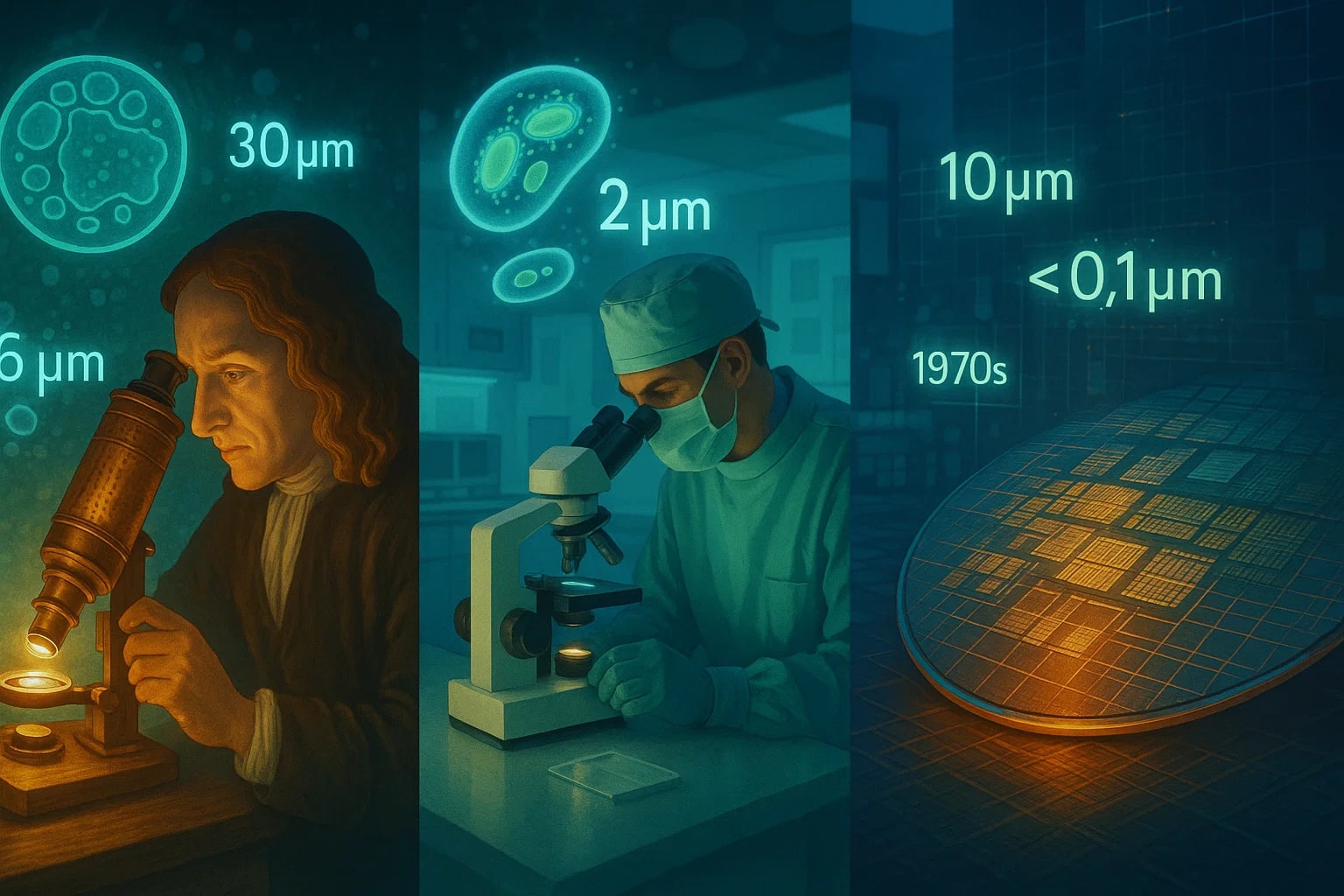centimeter to micrometer – How to convert cm to µm
Switching from centimeter to micrometer allows us to bridge everyday measurements with microscopic detail. While the centimeter appears on school rulers and clothing tags, the micrometer (µm) is used in laboratories, medicine, and nanotechnology to describe things invisible to the naked eye. Knowing how to convert cm to µm helps connect familiar scales to the world of cells and fine materials.

What is a Centimeter (cm)?
A centimeter equals one hundredth of a meter. It is common in everyday life, used for measuring height, notebooks, or household items. It belongs to the metric system, which organizes units by powers of ten for easy conversion.
What is a Micrometer (µm)?
A micrometer, also called a micron, is one millionth of a meter. That is:
1 µm = 0.000001 m.
It is used to measure cell sizes, bacteria, fiber thickness, and semiconductor components. For reference, a human hair is about 70 µm in diameter.
How to Convert cm to µm
The formula is: micrometer = centimeter × 10 000
Example Conversion: Suppose you want to convert 3.5 cm into micrometers:micrometer = 3.5 × 10 000 = 35 000 µm
So, 3.5 cm = 35 000 µm.
This shows how quickly values expand when shifting into smaller-scale units.
Do you know?
-
The centimeter was officially introduced in France in 1793 as part of the revolutionary adoption of the metric system.
-
The micrometer was named in the 19th century when scientists required a unit that matched the scale of microorganisms and fine structures.
-
Red blood cells measure about 7–8 µm across, a fact every biology student learns early on.
-
Modern smartphone camera sensors have pixels often smaller than 2 µm, proving how technology constantly pushes into microscopic precision.
From Biology Labs to Microchips
In the 17th century, the invention of the microscope opened an unseen world. But it wasn’t until the micrometer unit was adopted that scientists could quantify what they observed. When Robert Hooke and Antonie van Leeuwenhoek described tiny structures, they lacked today’s language of µm.
Fast forward to the 20th century: medicine, microbiology, and semiconductor engineering all relied heavily on micrometer measurements. In hospitals, lab technicians measured bacteria in micrometers to diagnose infections. In electronics, engineers used µm to describe transistor sizes, a key benchmark for progress.
One striking example came with the microchip revolution. In the 1970s, Intel introduced processors built on 10 µm transistors. Today, advanced chips boast transistor features under 0.1 µm. The journey from centimeters on a blueprint to micrometers on a silicon wafer shows how a simple conversion supports cutting-edge technology.

Seeing the Invisible in Numbers
The conversion from centimeter to micrometer may feel like an ordinary metric shift, but it bridges our visible world with the microscopic. From red blood cells to computer chips, this unit change describes scales that shape health, technology, and science.
For more conversions across different measurement scales, you can use the Length Converter or explore the complete Conversion Tools set to handle everything from the smallest details to the largest distances.
So next time you read about bacteria, sensors, or fibers described in micrometers, you’ll know exactly how to scale them back to centimeters — and grasp how close science brings us to the invisible world.

